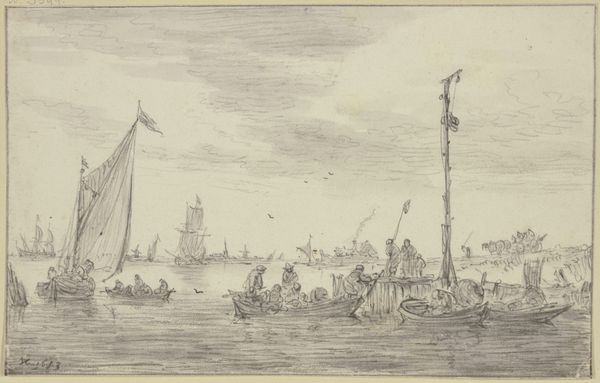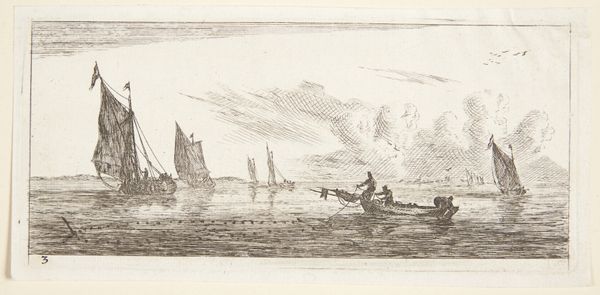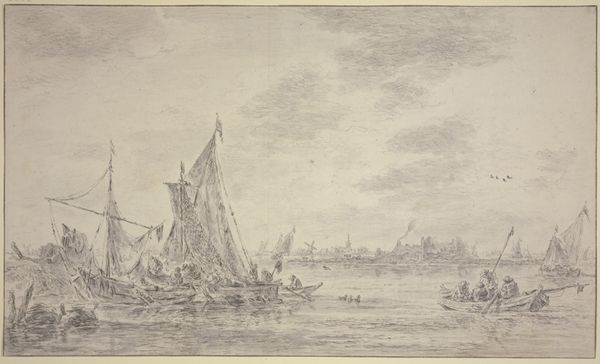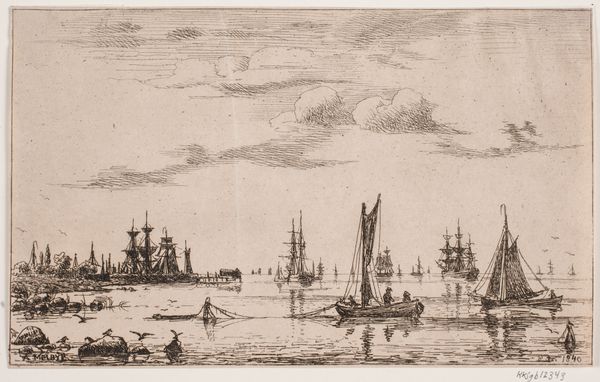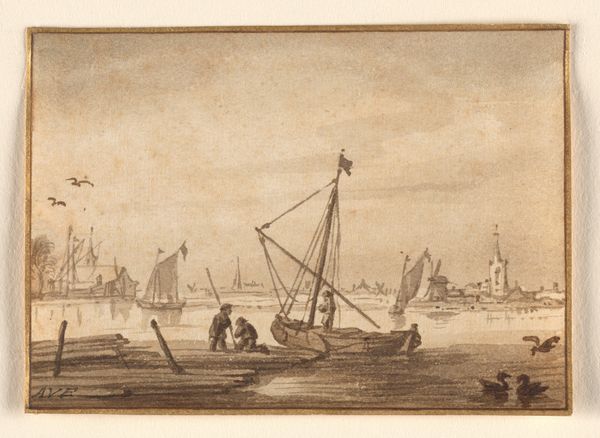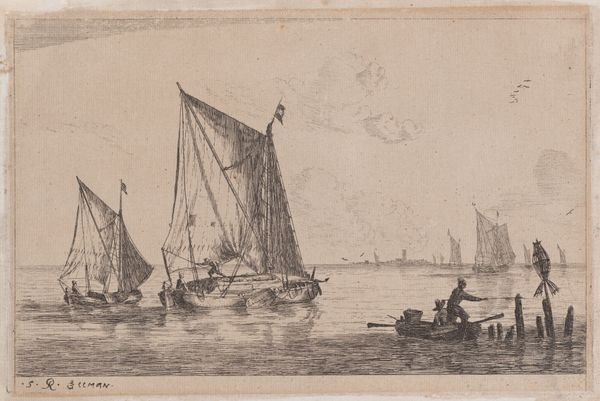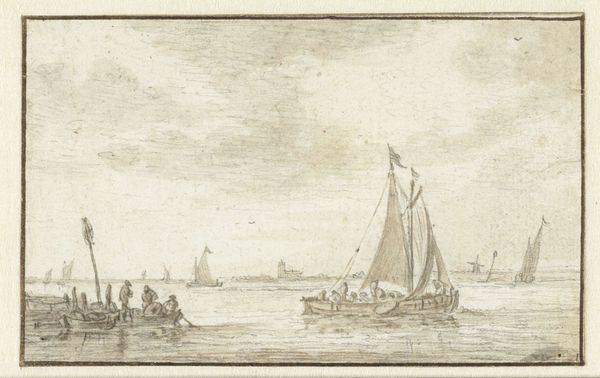
Marine mit vielen Schiffen, links ein Dorf, vorn ein Ruderboot
0:00
0:00
#
amateur sketch
#
toned paper
#
light pencil work
#
pencil sketch
#
incomplete sketchy
#
charcoal drawing
#
possibly oil pastel
#
underpainting
#
watercolour illustration
#
watercolor
Copyright: Public Domain
Editor: Here we have a drawing titled "Marine mit vielen Schiffen, links ein Dorf, vorn ein Ruderboot", or "Marine with many ships, a village to the left, a rowing boat in the front". It's by Jan Brueghel the Elder, but its exact date is unknown. What strikes me is the delicate detail, like a fleeting impression of a busy harbour scene. How do you interpret this work? Curator: It's interesting to view this as a visual record of the burgeoning maritime activity of the period. Brueghel, operating within the context of the Dutch Golden Age, presents us not just with a scene, but also with a portrait of a society increasingly reliant on overseas trade and naval power. Consider the implications of so many ships. Are they merchant vessels? Fishing boats? Naval ships? What does this concentration of maritime transport suggest about the economy and power dynamics of the time? Editor: That's fascinating. I hadn't considered the political aspects so directly. The ships do become a kind of symbol, then. Do you see a specific social message Brueghel might be conveying through this image? Curator: Perhaps less a specific message and more an observation. The detailed rendering of the vessels, contrasted with the softer treatment of the village, seems to highlight the shift of power and influence toward maritime activity. One might also consider who this work was for. Was it a commission, and for what purpose might such a scene be desired? Its display and function likely played a role in its ultimate meaning. Editor: So, thinking about where and how it would have been viewed adds another layer to the interpretation. I definitely see it differently now, thanks! Curator: Exactly. Considering art within its historical context reveals how artworks actively participate in cultural dialogues. There is so much to appreciate from Brueghel's artwork when viewed through these cultural lens.
Comments
No comments
Be the first to comment and join the conversation on the ultimate creative platform.

